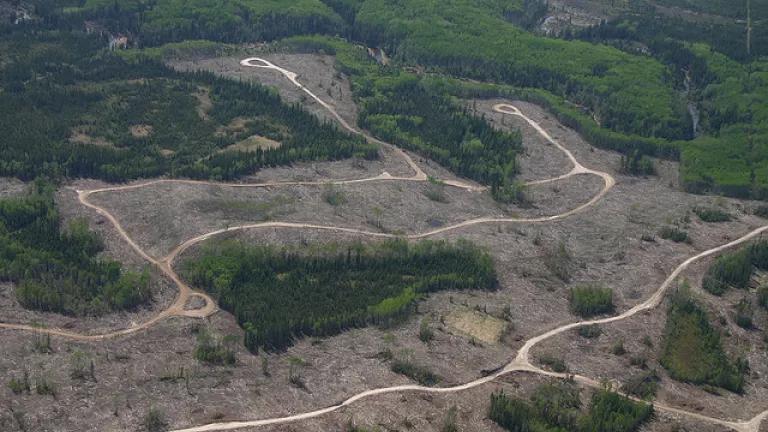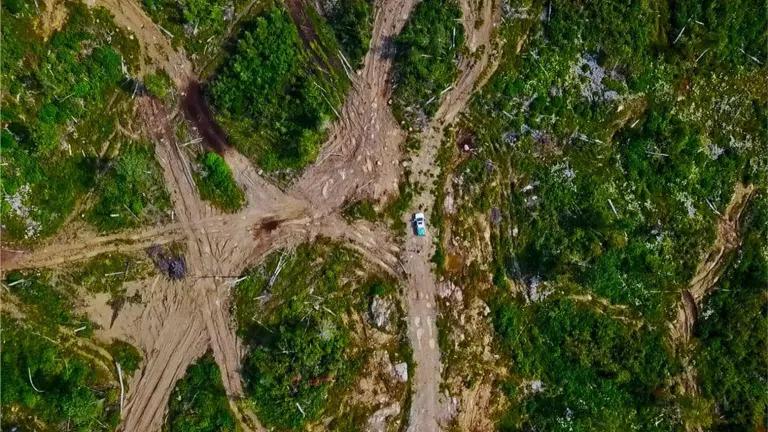
As a tar sands well blowout continues to gush oil for at least 10 weeks (and potentially as much as 4 months) contaminating a large area of Canada’s Boreal Forest killing dozens of animals, a new report reveals that Alberta’s regulatory system to prevent and enforce tar sands operations is lax and failing. The blowout from Canadian Natural Resources Ltd.’s Primrose tar sands drilling operation gained public attention when an anonymous government scientist went to the press with concerns about failures to contain the spill. According to a Mother Jones article, the spill—which has released at least 4,500 barrels of tar sands oil from the high-pressure, “in situ” tar sands production site—was reported to have started on May 21 and was still releasing oil as of Tuesday, July 23. The ongoing blowout, coupled with the report on the province’s failed regulatory program, raises questions about oversight of the tar sands industry especially given that neither the Alberta government nor the company has confirmed the cause of the blowout, the rate of seepage, or a plan to stop the spill. It also raises questions about this particular method of tar sands extraction, called “in situ” which is projected to be the dominant way that the industry extracts tar sands in the coming years. This spill underscores that despite its outward appearance of appearing less impactful, drilling for tar sands still comes with major risks. Moreover, in situ tar sands development is significantly more carbon intensive than tar sands strip mining operations – a focal point of the U.S. administration in making a decision over the proposed Keystone XL tar sands pipeline.
Example of a tar sands in situ operation above. Credit: Pembina Institute
Photos of the incident are featured on the Toronto Star website and were provided by a government scientist show the site of an oil spill in Cold Lake, Alta.
The uncontrolled spill from the Primrose tar sands drilling operation is located on the Cold Lake Air Weapons Range (where there are active weapons tested by the Canadian military) has already kills dozens of animals including beavers and loons. The Toronto Star, which broke the story to the public, said that more than 4,500 barrels (nearly 200,000 gallons) of bitumen had been released. At least 26,000 barrels of a tar sands and water mixture have been recovered in clean-up operations, and the blowout has contaminated almost 100 acres or an area the size of 75 football fields. Tar sands drilling operations require the injection of high pressure steam into deep reservoirs, creating cracks in underground geological formations, and essentially turning the earth into an oven so that the bitumen can be melted out. Despite the fact that they tend to have significantly greater greenhouse gas emissions than mining, fragment vast swaths of land, and use a tremendous amount of water, tar sands drilling operations are often promoted by industry as the “environmental friendly” method of tar sands extraction. It is estimated that 80 percent of tar sands can be accessed using these in situ or drilling methods.
The anonymous scientist who broke the story to the Canadian media said, “Everybody (at the company and in government) is freaking out about this. We don’t understand what happened. Nobody really understands how to stop it from leaking, or if they do they haven’t put the measures in place.” This is not the first time there has been a spill of tar sands from the Primrose operations. Another release of oil occurred in 2009 and after an investigation and apparent changes to steam injection operations, Government regulators permitted Canadian Natural Resources Ltd. to resume operations. The newly created Alberta Energy Regulator issued a press release announcing the spill on June 27 which indicated the released had occurred, but did not indicate the amount that had spilled or what actions were being taken to stop the leak. They issued another press release on July 18 announcing further measures for enhanced water monitoring and reductions steaming operations.
Just this week, a new report from Dr. Kevin Timoney and Peter Lee reveals that the system to oversee violations of environmental laws that are designed to prevent major leaks like the one in Cold Lake, Alberta, has widespread problems. The comprehensive 600-page report reveals that less than one percent of violations from tar sands operations are enforced. The study evaluated over 4,000 violations of Alberta’s environmental laws but found that 99 percent of those violations did not result in fines or other enforcement actions. The authors noted the Alberta environmental enforcement rate is far below that of the United States. According to the study, “the average enforcement rate for violations of the Clean Water Act in the United States for the period 2004-2007 was 16.0 %, over 17 times the environmental enforcement rate in Alberta’s bitumen sands region.” And the report also noted that of the 50 U.S. states, only 3 states had worse performance than Alberta.
The report details chronic failures to enforce, poor oversight, failure to provide timely access to accurate and complete information, and a near total lack of enforcement. The report also profiles substandard safety procedures, poor communications and emergency response, and lax monitoring by industry and regulatory. This has led to “systemic problems in management, reporting, monitoring, and environmental protection…” according to the report.
Some of the key findings:
- They reviewed over 9,000 environmental incidents or violations related to tar sands development in northeastern Alberta between 1996 to mid-2012 period.
- There was a minimum of 4,063 alleged contraventions (or perceived violations of legislation) and the Alberta took enforcement actions 0.9 percent of the time.
- Most enforcement actions imposed only minor financial penalties, and it appears media attention and public involvement facilitate enforcement measures.
The report details numerous examples of where violations of environmental rules were not reported to local communities. One such example occurred in April 2011, when a pipeline operated by Plains Midstream spilled 1.2 million gallons of oil onto boreal wetlands. The company was criticized for failing to communicate with the Lubicon Cree, an affected community, but failed to take enforcement action until a public report was released by Greenpeace.
The report also indicates that the Government of Alberta continuously failed to provide timely and accurate information to public following major spills. Journalists who have attempted to investigate oil spills in Alberta faced several hurdles with efforts to access information. The Alberta government was given a grade of “D” in the 2012 freedom of information audit conducted by Newspaper Canada.
The debate over the proposed Keystone XL tar sands pipeline has put Alberta’s tar sands operations and its regulatory system under a microscope. Alberta leaders have made several claims to audiences in the U.S. that the province is a world leader on environmental issues. Alberta Premier Alison Redford has traveled to the United States defending Alberta’s environmental record. In a USA Today editorial she said, “We stand ready to demonstrate our strong track record on responsible oil sands development.” And at another speech she said Alberta is “home to some of the most environmentally friendly, progressive legislation in the world.” Despite these claims, there are indications that Alberta’s environmental record is lacking.
Local communities living near and affected by tar sands operations deserve an independent audit of the effectiveness of Alberta’s regulatory system including public reporting. And U.S. decision-makers evaluating whether to approve or reject the Keystone XL tar sands pipeline should independently evaluate Alberta’s regulatory system in light of this new development.
With respect to this recent blowout, the Alberta government owes the public more information to the question of what is happening including the amount of oil that has leaked, the area affected, wildlife impacts, water quality monitoring, and information as to the cause of the occurrence. And U.S. decision-makers evaluating whether to approve or reject the Keystone XL tar sands pipeline should independently evaluate Alberta’s regulatory system in light of this new development.



